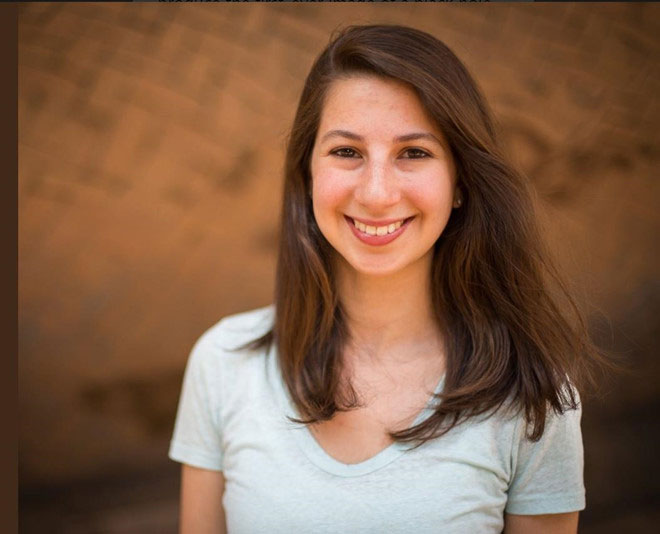This 29-year-old girl is the one who helps find the world's shaken black hole
Katie Bouman participated in developing the algorithm used for Event Horizon Telescope, which captured the first image of the cosmic black hole.
April 10 is an important time for science when people first see the actual photograph of a cosmic black hole thanks to the Event Horizon Telescope project.
In the midst of the world admiring the beauty of the black hole and comparing it to Einstein's theories, social networks are feverish about the girl behind this project.
It was Katie Bouman , who had just been appointed professor of California Institute of Technology (Caltech) at the age of 29 thanks to her outstanding achievements and a major contribution to the project of cosmic black hole photography.

Portrait of Katie Bouman, female scientist who contributed greatly to the project of photographing the black hole of the universe.(Photo: Twitter).
After graduating from the University of Michigan, Katie completed a master's and doctoral program at the Massachusetts Institute of Technology (MIT). Before that, right from high school, she participated in research and development of image processing software.
Together with the team of scientists at the Harvard-Smithsonian Center for Astrophysics, she helped re-image the black hole, and took the lead in testing the accuracy of this image.
More than 200 scientists have been involved in the project of cosmic black hole photography for many years. The newly published image is not captured in the usual way.
Black hole at an extremely far distance from the earth. In addition, in fact the black hole is completely dark, without any light falling out of its appeal. No ordinary camera can capture black holes.
The Event Horizon Telescope project must use a network of multiple telescopes scattered across the Earth to record radiation emitted from outside the "event horizon" of the black hole. The information recorded consists of 2 billion high-resolution images but still only fragmentary and fuzzy images of black holes.
Humans could not see the image released on April 10 without the algorithm developed three years ago by a group of scientists led by Katie Bouman.
Part of the reason why the global online community put up "Katie Bouman fever" thanks to the recent BBC image. In it Katie smiled brightly beside the stack of computer hard drives that stored the data of the black hole universe.
Many people have reposted and compared Margaret Hamilton with a stack of code books to help NASA bring Apollo to the Moon in 1969.

Katie Bouman uploaded a photo of her reaction when she saw the image of the black hole.(Photo: Twitter).
Another reason is that history rarely has a recognized female scientist commensurate with their contribution as the case of Bouman. Faced with this unexpected popularity, the 29-year-old female professor shared with CNN: "None of us can do it alone. This is due to the contributions of many people in different fields." .
Meanwhile, members of the evaluation project Katie Bouman played a key role in developing the black hole image reconstruction algorithm . "Katie Bouman is the main character in the photo group," said Vincent Fish, a scientist at MIT's Haystack Observatory.
In 2016, Katie Bouman had an exchange on TED with the topic 'How to take photos of black holes'. She explained that taking the first picture of a black hole will be done by an international team of scientists, combining a giant telescope system and image reproduction algorithms.
The first image of the black hole of the universe will lay the foundation for future research. Contributing to solving major problems in astronomical science has existed for hundreds of years.
- The reason 200 researchers took two years to photograph black holes
- Four big questions are answered after the first picture of the black hole in the universe
- The first time I took a picture of a black hole three million times bigger than Earth
- Discover the mystery of the most exotic black holes in the universe
- 740 million light years away is a completely different universe of black holes
- Discovering 'super black holes' is 12 times bigger than the Sun.
- Evidence of the power of black holes
- Albert Einstein was wrong, there was no black hole in the universe?
- Find the missing link on the black hole
- Black hole detection
- Video: Top 5 biggest black holes discovered by NASA in 2017
- How to retrieve information from inside the black hole
- The galaxy's giant black hole
- The first time I took a picture of a black hole three million times bigger than Earth
- Dangerous deadly plasma flows from the black hole
 The most famous scientific failures in history
The most famous scientific failures in history Mysterious genius mechanic and the machine froze time
Mysterious genius mechanic and the machine froze time The son carries the 'bad gene' of genius Albert Einstein
The son carries the 'bad gene' of genius Albert Einstein Isaac Newton
Isaac Newton